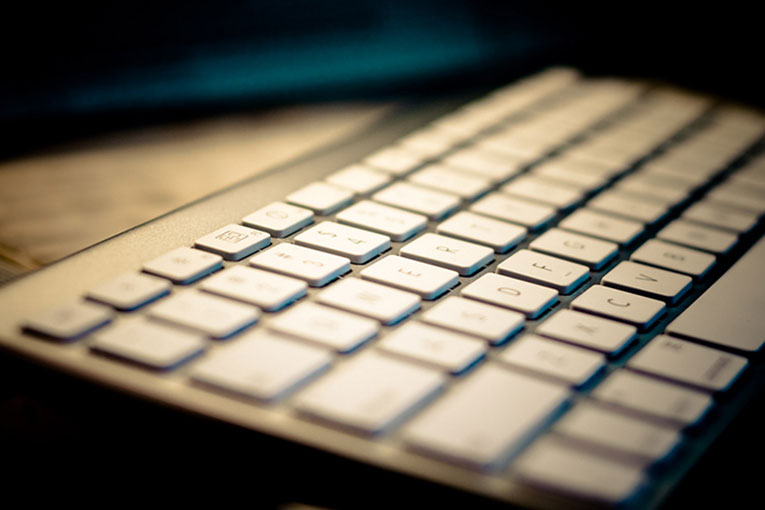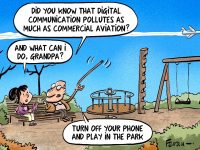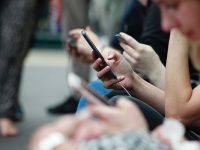The future is now: the Internet of things
La interconnexió dels objectes a la xarxa és una tendència creixent

 Jiang Jiang Jiang Jiang |
|||
|
Three high-pitched and robotic beeps come from the kitchen. Probably, the first thing that comes to your mind today is that the freezer or fridge door has been left open. Indeed, the fridge is warning you something is going on, but you were wrong about your first thought. Yogurts have simply expired and there are no milk cartons left. In half an hour, you will get what you need from the supermarket. Don’t worry, it has already been notified. You don’t have to do anything. It looks like a futuristic scenario, but it is closer than it seems –it is the Internet of Things (IoT). It is a concept that refers to the digital interconnection between quotidian objects and the Internet, and it will be so widely used that it will completely change people’s lives. Obviously, the Internet of Things can also be applied to other household areas besides the fridge. For example, in the toilet. IoT will recommend a more balanced diet after analyzing your urine. Or maybe, your toothbrush will arrange an appointment with your dentist after detecting caries. Your fork will contribute to these particular suggestions and recommend slowing down your eating speed. Also, your bracelet will begin now to warn about your vitals. Life will be more comfortable once the Internet of Things is completely set up. Then, intelligent lighting will switch on automatically when they detect a shortage in lighting and it will be possible to activate every electrical appliance before reaching home. Also, our trainers will be in charge of calculating how many kilometers we have walked. In fact, some of these situations are already happening today. But, how does the Internet of Things work exactly? |
|||
 Miguel Ángel Acera Miguel Ángel Acera The Internet of Things refers to the digital interconnection between quotidian objects and the Internet, and it will be so widely used that it will completely change people’s lives. |
|||
TEChNOLOGy «Today, any variable can be monitored». That is the key to understand how the Internet of Things can be a reality, as claimed by Emilio Soria, member of the research group Intelligent Data Analysis Laboratory (IDAL) of the School of Engineering of the University of Valencia. It is a machine-to-machine dialogue, that is, there are two Internet-connected devices that send data to one another, and one makes its decisions that are subsequently returned to the other. «For example, you place an order to a company and there is no one taking care of it at that moment. The Web server receives the order and sends it to the factory. That company knows that it must get another order ready. In turn, the order has already a reference so it goes to the appropriate place for distribution. In this process there are no humans involved this is why it is a machine-machine dialogue», says Soria. Therefore, it is as simple as integrating a small-sized chip on any object to process and transmit information constantly from it. This is a trend that will continue to develop in coming years, as Technology experts claimed during the events at Teleko Gaua 2014 in Bilbao. In six years time, the number of devices connected to the Internet will be multiplied by ten and they will reach 50,000 million in 2020. The devices will have some kind of embedded operating system as well as a wireless communication system that will use communication protocols to control them. |
«In six years time, the number of devices connected to the Internet will be multiplied by ten and they will reach 50,000 million in 2020» |
||
|
|
|||
|
The devices will connect to the Internet or to other devices that will be used as gateway. A computer software will receive data from the objects through sensors and chips, usually on the Internet, and that data will be processed. The first steps to develop the Internet of Things have been given by devices that create prototypes used in Computer Engineering classrooms. Arduino It is a programmable electronic board. That means a board with an integrated chip that allows the installation of a computer programme. You can introduce different functions. Information is transferred to the board through an input interface connected to a peripheral device. Simultaneously, the output interface carries the information processed by peripherals, performing the final use of these data. Manuel García, student of Computer Engineering at the Polytechnic University of Valencia, provides a practical example with his latest Arduino project. He has developed a monitoring system for parking barrier gates, controlled by an Arduino, which sends information of its current status to a central server. Raspeberry Pi It is a small-sized and very economical computer which is capable of performing complex processes. It is possible to create any type of prototype in order to progressively develop the Internet of Things. business network The Internet of Things is squarely implemented in the Valencian business network as an effective tool to increase productivity. The Valencian company Aranco, which is specialized in industrial packing services using wrapping machines for pallets, will soon integrate the Internet of Things to streamline its production. They will team up with a group of researchers from the University of Valencia that will focus on predictive maintenance of machines. Emilio Soria, also a member of the research team, reveals some of its key points. |
«The Internet of Things is squarely implemented in the Valencian business network as an effective tool to increase productivity» |
||
|
|||
|
the Internet of things for cities The Internet of Things will enable the development of smart cities through millions of sensors that will constantly produce data. The main goal is to optimize all kinds of processes. Emilio Soria emphasizes the interconnection of objects that can transform the city life and generate income and quality of life. Some of the applications that the IoT can develop in order to transform cities into true smart cities involve parking, lighting and also intelligent mobility. In May 2014, the city of Valencia was already positioned as the first Spanish city to centralise all the information through the Valencia Smart City platform with the aim of building a smart city. Once the city is fully developed, lighting, traffic, local police, pollution or towing service will be constantly monitored and connected. In this scenario, a system of intelligent parking metres would inform citizens where a free parking place is available. Similarly, the driver would receive an automatic message that informs about the remaining time available for the parked car. Within the message the driver will be offered an extension prior credit card payment. Besides, public lighting will be optimized using IoT sensors and technology. In this regard, the expert Emilio Soria explains that Valencia is a «well-designed» smart city project. «We are in the early stages now», he adds. Sensors are currently being implanted throughout the city. «To become a smart city, we should go a step further and modify the habits of citizens. The key is to predict things. From previous data as well as new sensors, we will predict if there is going to be a traffic jam soon, so we can activate signs on the road offering alternative routes. That would definitely modify our habits», says Soria. Other Valencian cities are also following this path in order to become smart cities. Pau Bretó, from the communication department of the City of Paterna, says that his city has become part of the sixty Spanish intelligent municipalities, after the Board of the Spanish Network of Smart Cities (RECI) had accepted its joining. The adhesion of Paterna to the Spanish Network of Smart Cities will allow the town to carry out new experiences for sustainable management that were implemented in other municipalities. In addition, it will allow exporting those which have been successfully developed in Paterna. The council specifies some of the actions that are already underway in the smart city project, such as implementing e-invoicing, the promotion of digital signature, the monitoring of network traffic or electronic citizen surveys as a mechanism of implementing an effective public participation. Similarly, the council explains that there are still projects being developed. Those projects contemplate the incorporation of cell phone apps, such as the Parkible app project in order to improve parking. All these initiatives have the aim to transform Paterna in a sustainable city. SMART CITIES Some of the applications that will be available when smart cities fully function are: BUT, IS IT RISKY FOR SOCIETY? «Once you are on the Internet, your anonymity, privacy or security are not guaranteed», warns the Professor of Electronic Engineering about the risks that undoubtedly entail implementing the Internet of Things. A more controlled world? «I do not care if they have access to private data if they are going to make my life more comfortable with that information. As long as they remain anonymous, of course». This is just an opinion from the expert Soria, but others have a different approach to the topic. Besides the network dangers related to the intrusion of hackers, one of the risks presented by developing the Internet of Things is the ability to control the population, considerably reducing individual privacy. Smart cities as an example is what best represents this risk, because implementing intelligent systems that lead to environmental and economic sustainability of the city require that they must be intrusive. This means that cities will gradually use sensors that will in fact manage traffic efficiently through collecting data at rush hours or consulting the most used routes. But this does not mean zero-cost. This implies that citizen activity will be more controlled. Unemployment increase? Some people fear a return to Luddism as they believe that technology increases productivity, which can result in the stagnation of employment rates. It is also reported that more jobs will require less labour force, so many of today’s jobs will prove unnecessary. Technological progress entails the challenge of relocating workers that have been replaced by machines in the labour market. Undoubtedly, the concept of ‘Internet of Things’ emerges as a great opportunity for the business ecosystem and offers new amenities to the citizens in their daily routine. In this regard, a recent study elaborated by Sogeti has pointed an increase of new businesses and services in the next six years. While technological progress is an advantage, it entails, however, an increase in the vulnerability of the security systems and challenges the citizens’ right to privacy. |
«Some of the applications that the IoT can develop in order to transform cities into true smart cities involve parking, lighting and also intelligent mobility» «Implementing intelligent systems that lead to environmental and economic sustainability of the city require that they must be intrusive» «While technological progress is an advantage, it entails, however, an increase in the vulnerability of the security systems and challenges the citizens’ right to privacy» |
||
|
|||
| Irene Calvo. Journalism student of the University of Valencia.. © Mètode 2015. |
|||







